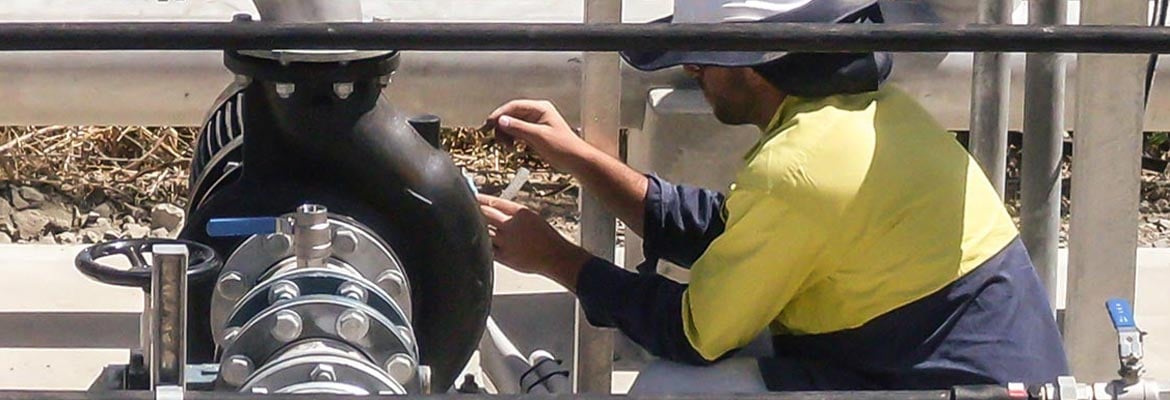Pumps make up a considerable percentage of the manufacturing industry and are a crucial component of any site. There are a wide range of problems that can arise with the operation of your pump. In this blog, Global Pumps outline common symptoms and the best pumping solution for these.

My pump is experiencing abnormal flow
If the pump is experiencing abnormal flow, this is a sign of a problem. If the decrease is obvious, or if the pump is taking more time to do the same job, it could be caused by a collapsed suction hose line. Otherwise, it could be a leaking gasket, plugged suction line, or a damaged impeller or wear plate.
If you have identified this as the problem, it is important you measure the discharge pressure and suction vacuum. Compare these figures to the initial readings taken at installation and look for any abnormality. If the discharge pressure is higher than the previous figures, a closed valve or an obstruction could be the issue.
What is the best pumping solution for this instance? Global Pumps suggest installing gauges approximately 2 – 4 pipe diameters from the pump. A gauge will measure pressure and vacuum.
My pump is making a lot of noise
One of the most common pumping concerns is noise. This generally means the pump is experiencing cavitation, which may be due to several things:
- suction lift is too high
- too long suction hose
- plugged or collapsed lining
- blocked strainer
- combination of all these elements
Cavitation is not always the extreme noise - it can sometimes be bearing failures. It's important you recognise whether the noise is mechanical or hydraulic. One option is to run the pump without water - if the noise is gone, it is mechanical, if not, it is hydraulic.
My pump is overheating
This is associated with restricted flow of liquid in, or out, of the pump. Overheating could also be caused by improper clearance which may be slowing the re-priming. However, there could also be other issues related to recirculation – therefore wait until the pump has cooled to check component.
My pump is leaking air
If the pump is leaking air, use a vacuum gauge to test the suction line, fittings and pipe plugs seal. It is important you ensure these components are airtight. Use pipe dope seal gauge threads and pipe plugs.
If the vacuum gauge falls off after shutdown, atmospheric pressure is entering the suction pipe causing the pump to lose its static lift. This can be fixed by replacing the suction flap valve if worn.
Global Pumps’ top pump problem checklist
With over 40 years' experience working with a variety of industries, Global Pumps' share their top tips for pump problems:
- Check the volute casing, impeller vanes, wear plate or wear rings and any hardware. At this point, complete a shut-off test to determine if there is any internal wear. Start the pump, at fill flow, and close the discharge valve. Global Pumps suggest recording the suction and discharge readings.
- Check the impeller clearance – if this is off, components can wear due to rubbing.
- Check the seal – has the seal been worn? There could be sand or other materials that can break the seal. If the integrity of the seal has been compromised, then replace the seal.
- Check the bearings of the pump, as worn bearings can cause a wobble. This leads to noise and overheating which could eventually freeze so these must be checked and replaced.
- Check the engine or motor – are these receiving enough power. If not, it can be a serious issue.
- Check air release devices, valves, check valves and shock control devices for optimal operation.
Is your pump problem not listed? Or you are not exactly sure what is going on with your pumping system, give Global Pumps a call. Our team have experience assisting businesses from a wide range of industries solving their tough challenges.

